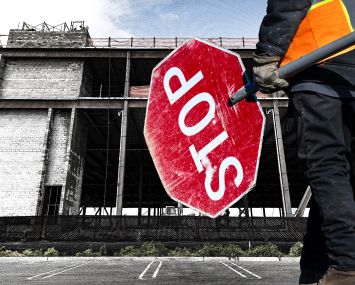Harry Moehringer of Marks Paneth Shron on the Return of 1031 Tax Exchanges
By Jotham Sederstrom March 27, 2012 8:30 am
reprints
In the early part of the 2000s, as the real estate bubble continued to inflate, the use of 1031 Tax Exchanges as a shelter was, as Harry Moehringer of Marks Paneth Shron pointed out, probably one of the hottest accounting strategies on the American scene. Indeed, under section 1031 of the Internal Revenue Code, the IRS rule allowed the exchange of certain types of property to defer recognition of capital gains or losses upon their sale, therefore deferring capital gains taxes. Mr. Moehringer spoke to The Commercial Observer about how the section, which some call a loophole, is coming back in style.

The Commercial Observer: What is a 1031 Tax Exchange and has it always been an instrument used by real estate accountants?
Mr. Moehringer: It’s been around for quite some time in different iterations and different rules, but the thrust of it is they’re giving people the opportunity with investment real estate and real estate use for business purposes. So it excludes personal real estate. This doesn’t apply to personal residences or anything of that nature, but any type of business real estate or investment real estate.
What are these tax exchanges used for?
They give you the opportunity to roll over the gain that you have on a piece of property as long as you meet the requirements in terms of timing and the type of property that you roll your gain over to, and they allow you to further gain and roll it into the new property so that you don’t have to pay a capital gains tax at the initial point of sale.
Is it fair to say that, since the downturn, fewer real estate owners are taking advantage of 1031 Exchanges?
1031 Exchanges had really, really gotten very hot back in the earlier part of the last decade into the mid part of that decade, kind of before the whole credit crises and recession hit.
Why had it been hot during that particular moment in time?
It got hot because the values of real estate were going so wild and going up and up and up. People were then having such tremendous gains in all their properties, and many times they wanted to lock in these gains because the fear was that the real estate market might turn around in the future, as it usually does because there’s usually ups and downs over periods of time. So a lot of people wanted to lock in these gains but they didn’t want to pay the tremendous capital gains taxes so more and more people started looking at doing these exchanges. There were even a lot of companies that set themselves up as specialists at finding properties and facilitating these transactions. So you had these 1031 shops out there that were marketing, like, ‘sell your property and we’ll find you a new property and we’ll get the whole thing done for you.’ It was a package deal.
What happened?
You didn’t see any 1031 exchanges going on in 2008, 2009 or 2010. But the market is now just starting to recover to the extent that values have stabilized, at least in the big cities, where values have stabilized. Now you’re starting to see maybe a few 1031 exchanges again. We’re seeing the return of the exchanges, but it’s nowhere near the heady days of what was going on during the mid part of the decade.
Will it return to those days, or disappear?
If the real estate market continues to improve over the next five years, and that improvement expands beyond the big cities, and if capital gains rates go up, which right now they’re slated to do if the current tax provisions stay in place, then you’re going to find more and more people wanting to defer their gains and then, yes, I think 1031 exchanges would certainly heat up again.—Jotham Sederstrom


